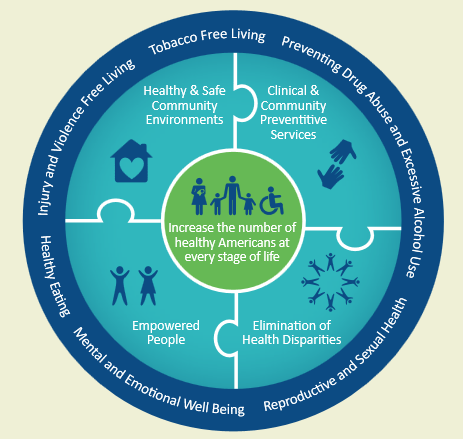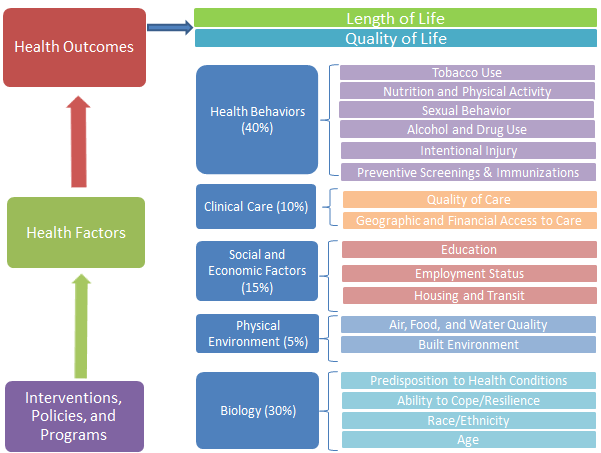
Population Health
Population health is often defined as the health outcomes of a group of individuals, including the distribution of such outcomes within the group, as measured by health status indicators. The field of population health includes health outcomes, patterns of health determinants, and policies and interventions that link these two.
Population health outcomes are the product of multiple determinants of health including medical care, public health, genetics, behaviors, social factors, and environmental factors and the distribution of disparities in the population.
Strategies for Improving Population Health
The Triple Aim

The Institute for Healthcare Improvement's Triple Aim is a framework thatserves as the foundation for organizations and communities to successfully navigate the transition from a focus on health care to optimizing health for individuals and populations. It is IHI’s belief that new designs must be developed to simultaneously pursue three dimensions, which is referred to as the “Triple Aim”:
- Improving the patient experience of care (including quality and satisfaction);
- Improving the health of populations; and
- Reducing the per capita cost of health care.
The National Prevention Strategy
The National Prevention Strategy prioritizes prevention by integrating recommendations and actions across multiple settings to improve health and save lives. The Strategy envisions a prevention-oriented society where all sectors recognize the value of health for individuals, families, and society and work together to achieve better health for Americans.
Within the Strategy, there are seven Priorities that provide evidenced-based recommendations. These strategies are most likely to reduce the burden of the leading causes of preventable death and major illness.

- Tobacco Free Living
- Preventing Drug Abuse and Excessive Alcohol Use
- Healthy Eating
- Active Living
- Injury and Violence Free Living
- Reproductive and Sexual Health
- Mental and Emotional Well-Being
Georgia Department of Public Health's Population Health Outcome Model
To explain the relationship between health factors and to demonstrate opportunities to improve population health outcomes, the Chronic Disease Prevention Section at the Georgia Department of Public Health adopted a model that incorporates these factors that influence length and quality of life.

Although health care is often thought of as the most important factor influencing health, a widely-used study suggests that it is in fact responsible for only about 10% of health status. Biology, genetics, and race influence which health conditions a person is predisposed to, and ability to cope and resilience to threats to health account for about 30% of health outcomes. The remaining 60% of health is attributable to the social and physical environment in which a person lives. Health behaviors-alcohol, tobacco and other drug use, nutrition, physical activity, and receipt of preventive screenings-account for about 40%. And, social and economic factors like education, employment, housing and transportation factors account for about 15% of health outcomes. And, they physical environment including air, water, and food quality as well as the built environment are responsible for the remaining 5% of health outcomes.
Additional Resources
ASTHO
Population Health Fact Sheet